Fantastic (free) synths and how to use them: Xenos
Hold on to your oscillators as we journey into the realms of stochastic synthesis, randomized tuning and Iannis Xenakis
In my previous articles about fantastic free synths and how to use them, we've covered the most fundamental principles of synthesis: namely, subtractive, modelling, FM, wavetable, and 8-bit digital synthesis.
In this article, we’re going to delve into something a little more left-field and strange. Rest assured though, whilst the nature of this synthesiser is somewhat unusual and comes with some unfamiliar jargon, we can still use it musically to make some interesting and powerful sounds. If you'd like to hear how the synth sounds, follow along with the video embedded above.
Without further ado, hold on to your oscillators and envelopes as we journey into the realm of randomized tuning and stochastic synthesis, the brainchild of composer and academic Iannis Xenakis.
Stochasticism and Iannis Xenakis

The term stochastic refers to something that has a random pattern. Moreover the randomness, whilst near impossible to predict, can be analysed, and some degree of logic usually derived from the randomness (in retrospect).
Greek composer and music professor Iannis Xenakis was fascinated by concepts and theories of stochasticism within music and it formed a significant part of his work. As early as 1963 he was researching and publishing papers on how computing could be used to stochastically generate pitches and timbres.
In short, the practice of stochastic synthesis involves creating a set of randomly produced values, joining them together in a waveform and cycling this waveform to produce a pitch. The randomly generated waveform is your timbre/tone and the frequency of cycles is your pitch.
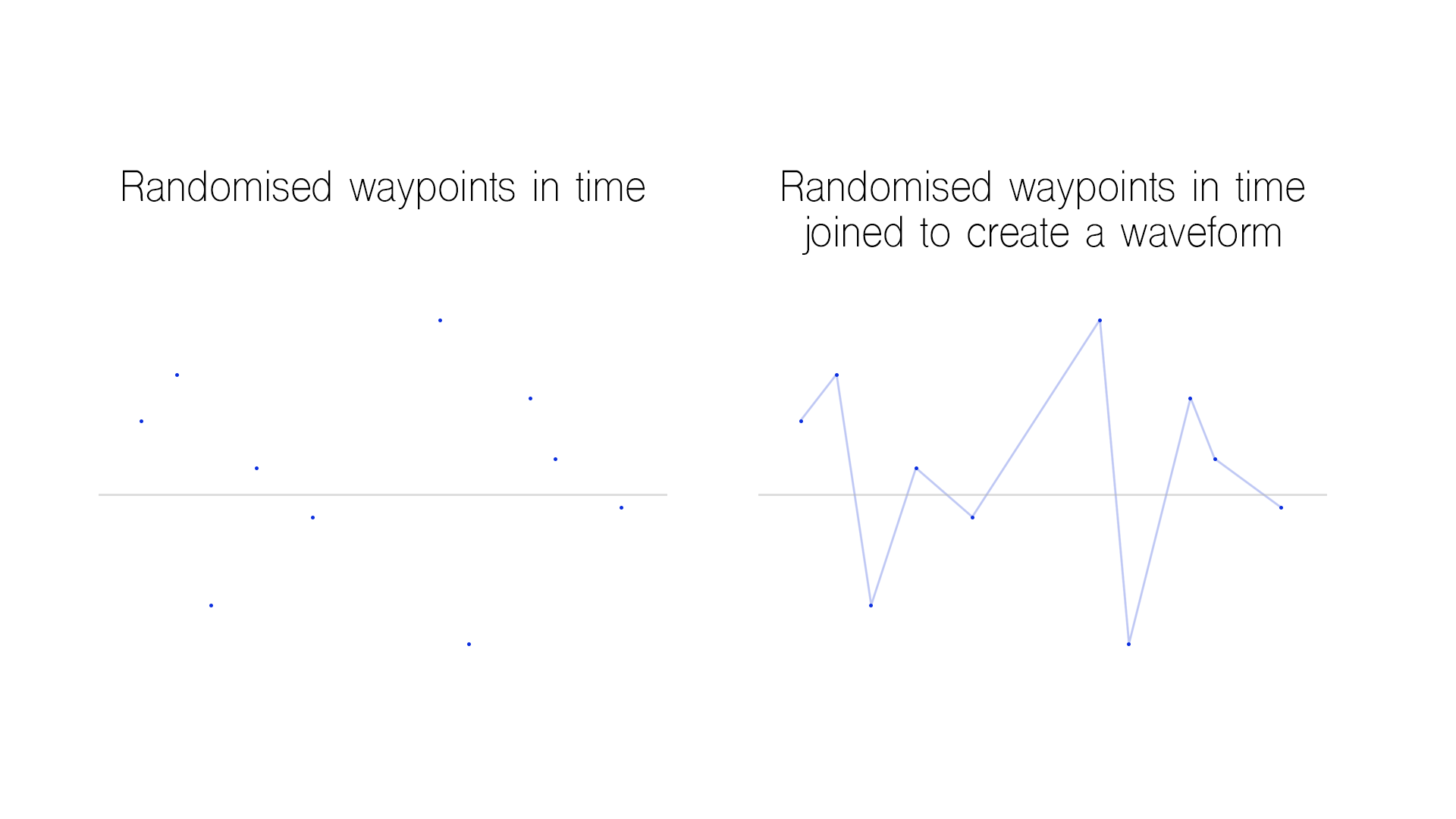
To create such random waveforms would typically yield something akin to noise (like white-noise, pink-noise, brown-noise or other types of unmusical, digital noise). Stochastic synthesis therefore aims to temper and pitch-quantise these randomisations into more musically-usable pitches.
Want all the hottest music and gear news, reviews, deals, features and more, direct to your inbox? Sign up here.
It does so by anchoring the randomisations around a pitch and allowing the user to determine how extreme the randomisations are, such as the number of waypoints, how extreme they deviate from the centreline, and so on.
Whilst this was complex and difficult to achieve in Xenakis’ time, today’s computing power allows us to apply these principles in software, such as the free synth plugin Xenos by Raphael Radna. Let’s take a look at what’s possible.
How to use Xenos
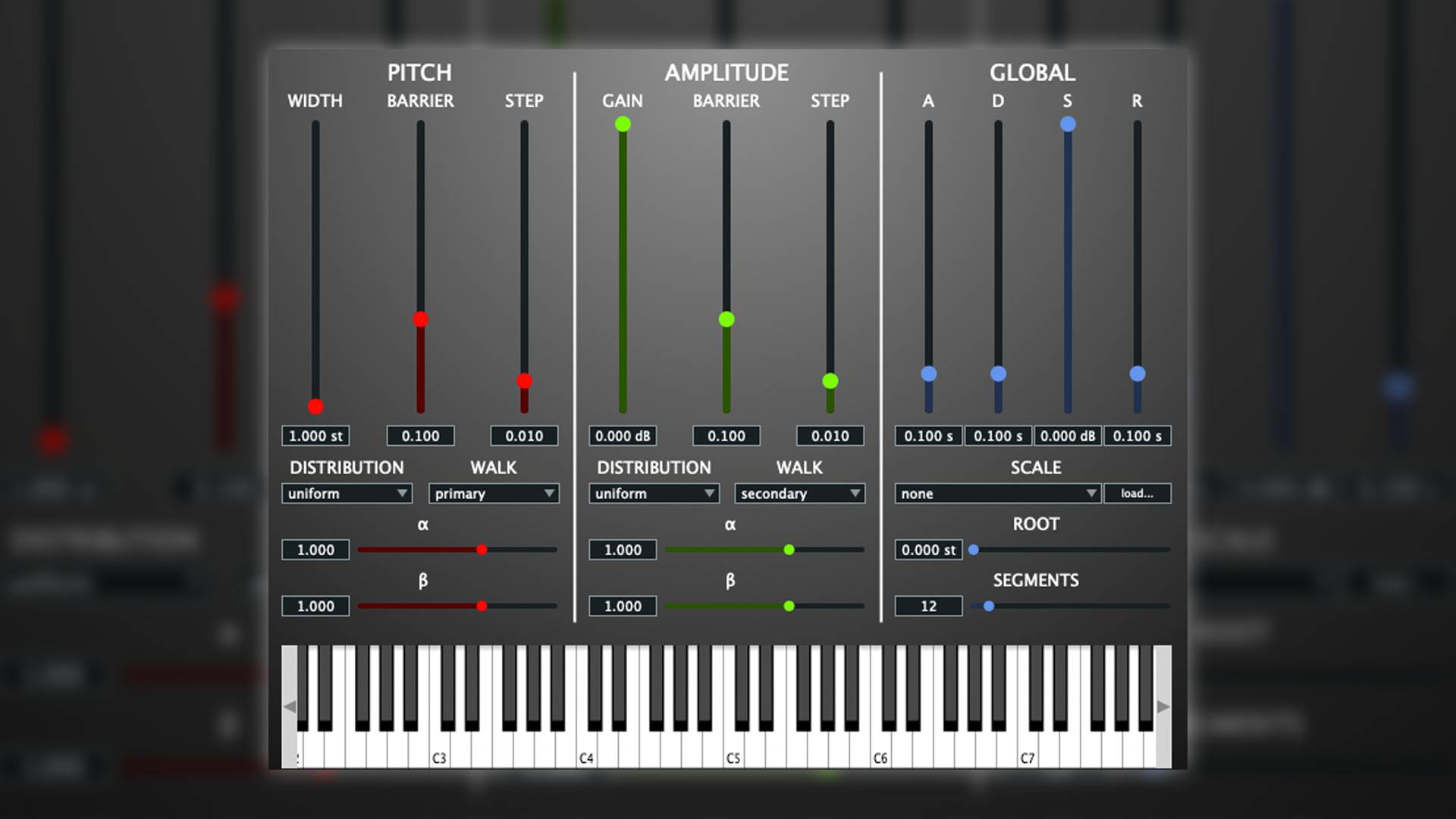
Xenos is neatly organised into three colour-coded categories; Pitch (red), Amplitude (blue) and Global (green). Upon startup the default tone sounds similar to an accordion or other reed instrument that's struggling to hold a constant pitch (I know… that doesn’t sound very appealing, but stick with me!).
The Pitch section primarily controls pitch randomisations, and upon first experimenting it may feel reminiscent of FM synthesis.
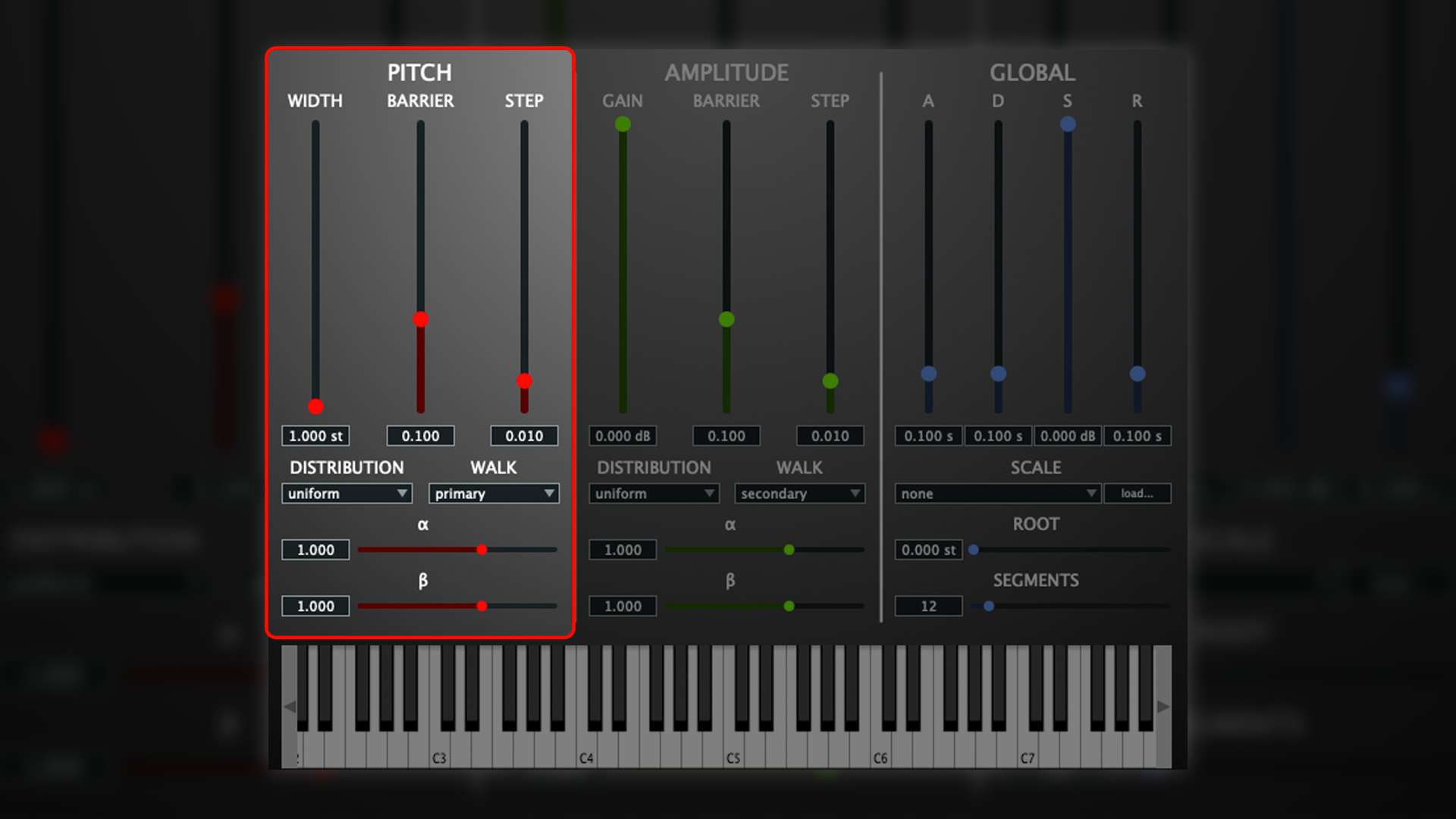
Width - Determines how much the tuning will fluctuate around the note (pitch) that’s is played
Barrier - Determines how high/low the waypoints can go (on the vertical axis)
Step - Determines the pitch randomisation in ratio to the pitch range (Width). The higher this value, the more noise-like the tone becomes
Beneath this are further tailoring options that allow you to manipulate some of the more nuanced aspects of the tone.
Distribution - A selection of different randomisation algorithms, each with their own, distinct flavour. The best thing to do is to try them all for yourself to get a feel for what each one does (there is an explanation of how each algorithm behaves in the appendix of the user-manual if you want a little more insight)
Walk - This has two options; Primary and Secondary. The Primary Walk keeps the randomisations more closely tied to the centreline, whereas the Secondary Walk allows the randomisations to veer further towards the extremities of the parameters. Therefore the primary walk tends to sound more controlled and stable (in terms of tuning).
α - This controls the response of the pitch distribution and can best be summed up as random +/- pitch variations. The closer to zero, the less extreme the pitch fluctuations.
β - This is a secondary +/- control that works similarly to α, for an additional tier of randomisation. According to the manual, this has no effect on some of the distribution algorithms.

The Amplitude section looks like a copy of the pitch section, only with a colour-palette swap. In many ways, it’s best to think of it in these terms. These controls do exactly for amplitude/loudness, what the above-mentioned controls do for pitch.
Width - Determines how much the amplitude will fluctuate around a fixed amplitude setting
Barrier - Determines how high/low the amplitude waypoints can go (on the vertical axis)
Step - Determines the amplitude randomisation in ratio to the Width. Again, the higher this value, the more noise-like the tone becomes
Like the above, the Distribution, Walk, α, and β controls all operate in precisely the same way as described above (for pitch), only here they affect amplitude instead.

If you’ve used a few synthesisers, the Global section should hopefully feel very familiar. It’s essentially an ADSR amp-envelope and a selection of global tuning controls.
Scale - This is a rather intriguing section that allows you to choose preset scales, which will omit notes according to your chosen scale. For example, if you choose the “Major” scale and attempt to play a minor scale, you’ll notice the flats are re-tuned or quantised to their major counterparts. As a pianist, I find this all rather disconcerting, and like to leave the scale set to Chromatic, however it is a fun way to land upon unintended chord voicings.
Root - This is a global transpose, but it’s microtonal and doesn’t behave as you might expect. Because this synth is rooted (no pun intended) in randomised pitch fluctuations that are in some areas exponential according to the root note, a half-step tuning adjustment doesn’t always yield a half-step response from the synthesiser. It’s best to have a tinker and experiment (assuming you wish to use the global transpose feature).
Segments - This controls the overall number of segments (or waypoints) that exist within a wave cycle. The more waypoints there are, the more timbre is present in the tone. I find that increasing the segments can invoke similarities in tone to FM synthesis (when you increase the output level of a modulator).
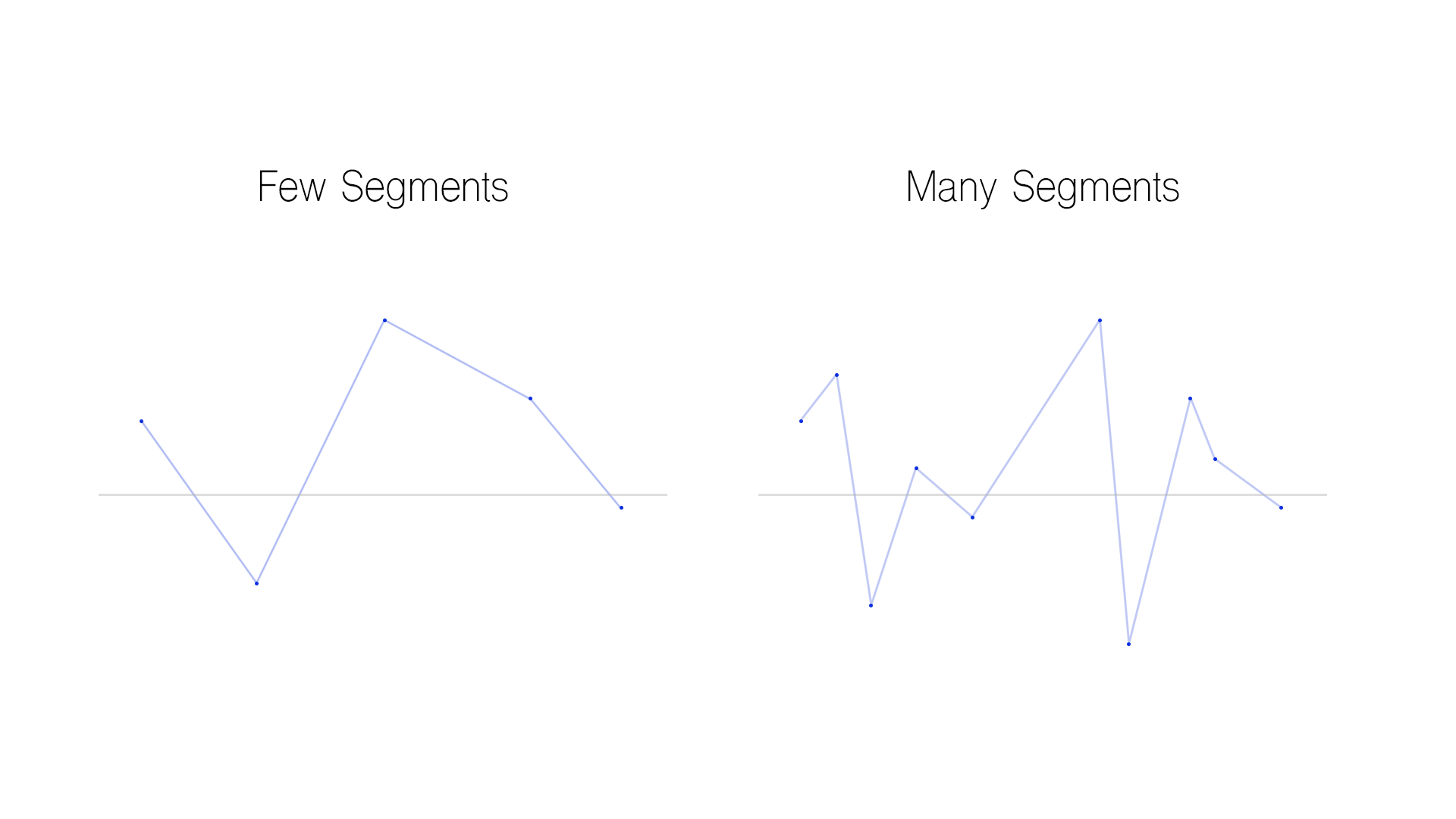
Sounds you can try to recreate
1. Clicky Clav

Here, I’ve dialled in a clavichord-like tone by significantly raising the segments value to produce many timbral overtones, and manipulating the pitch and amplitude randomisations to invoke a small amount of textural nuance and tactility. It doesn’t sound like a real clavichord, but it has similar tonal characteristics and can be used in similar ways (to how one might use a clavichord).
2. Icy Strings
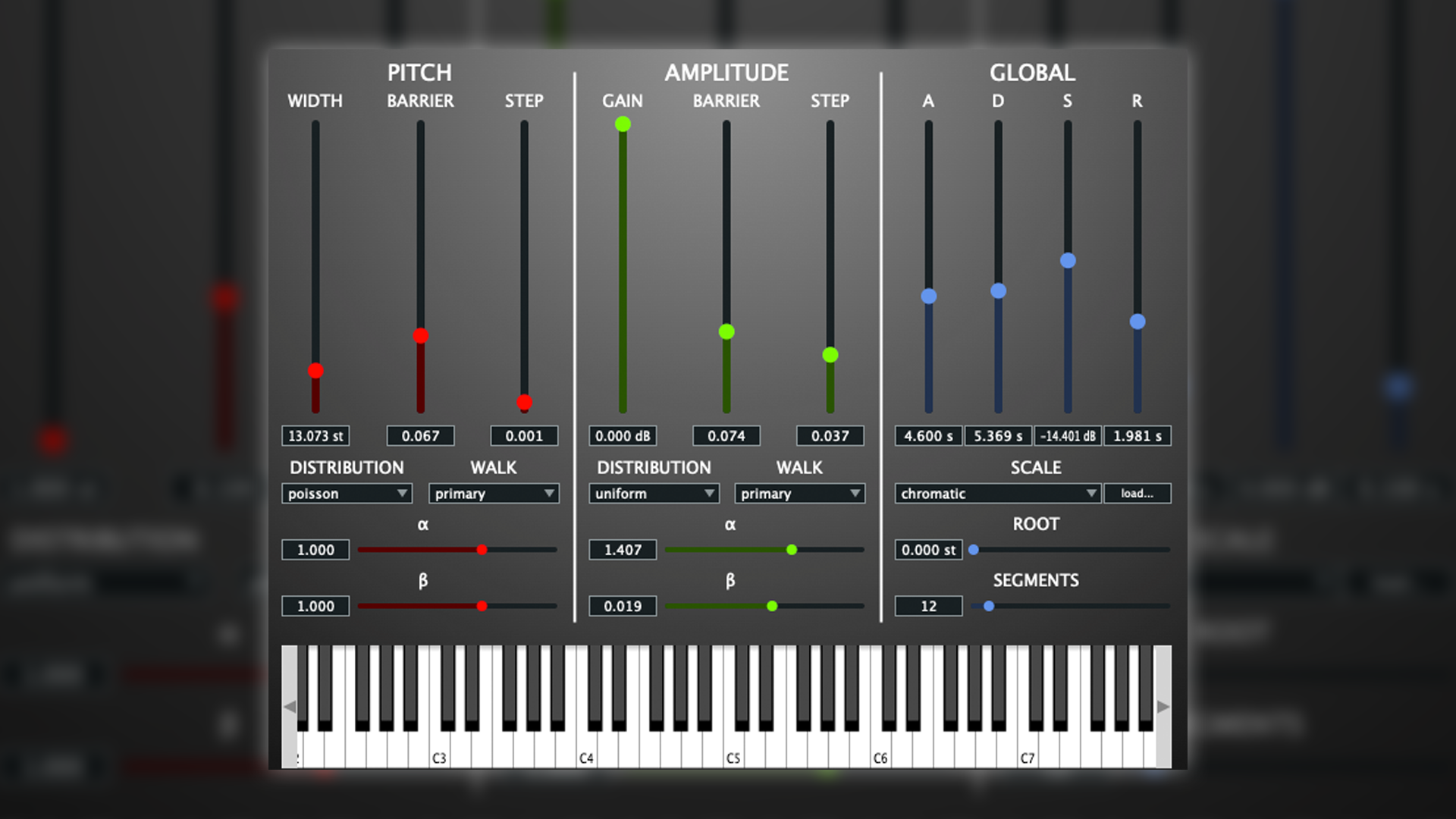
Using much fewer segments, subtler randomisations, and a pad-like envelope setting, this pad has a string-like quality. Like the Clicky Clav above, I’ve invoked some textural nuance and interest, largely through the use of the amplitude settings. This string-like tone has both glassy characteristics and some fast-tremolo-like shimmer.
3. Mournful Major
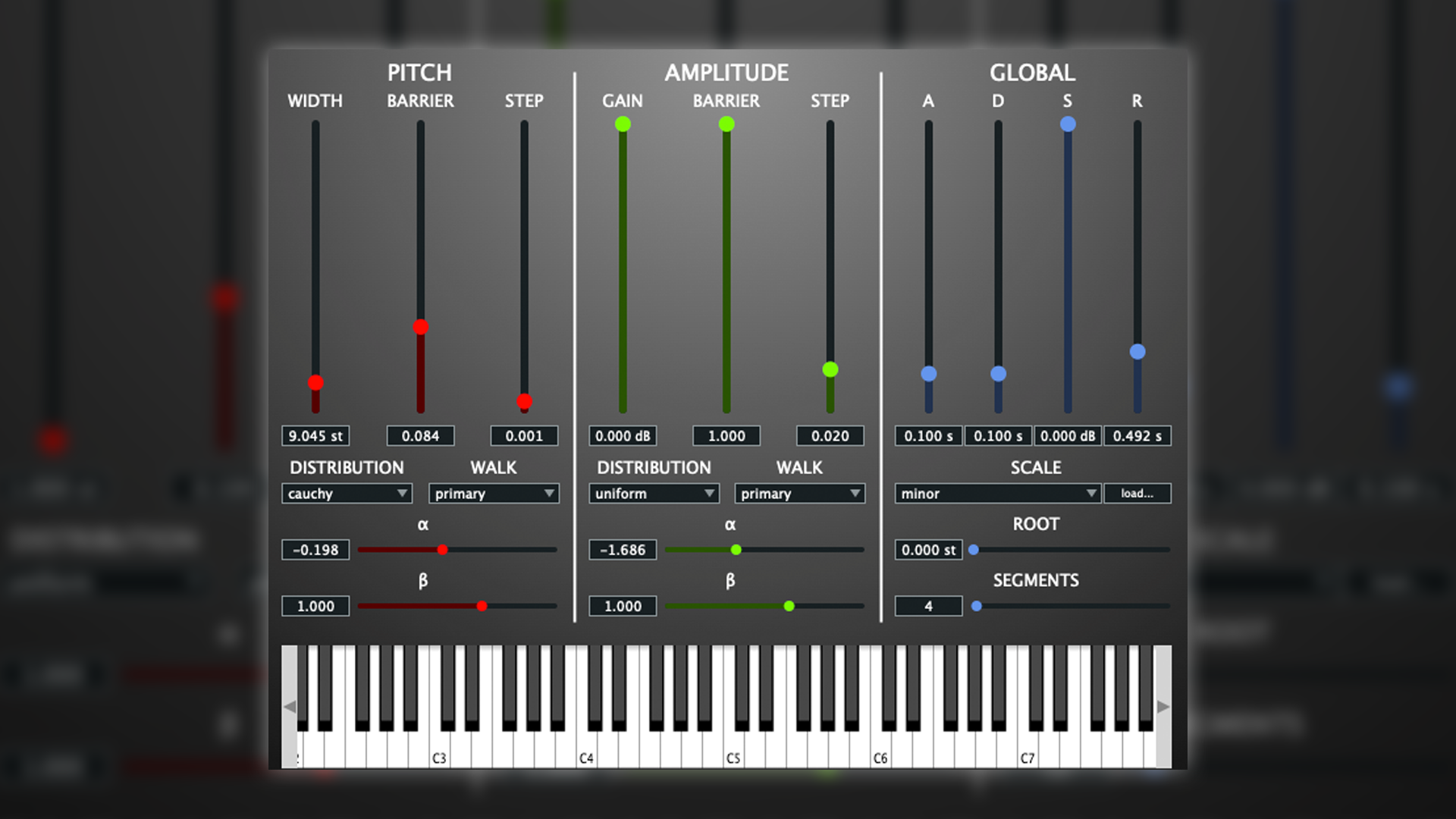
In this preset, I’ve set the Scale to “minor”, and dialled in an organ-like tone. Firstly, the tone is a little unstable and wants to jump around the tunings, ever so slightly. Secondly, the scale is confining (or quantising) notes to a minor voicing.
The reason I’ve named this preset Mournful Major is that if you simply hold a major chord for a period of time, you’ll hear the tunings move and dance around all manner of minor diatonic notes close to those that you’re holding. There’s an eerie mournfulness to this sound. Pair this with a cathedral-like reverb and you’ve got yourself the beginnings of something seriously weighty and powerful.
4. Stochastic Sitar
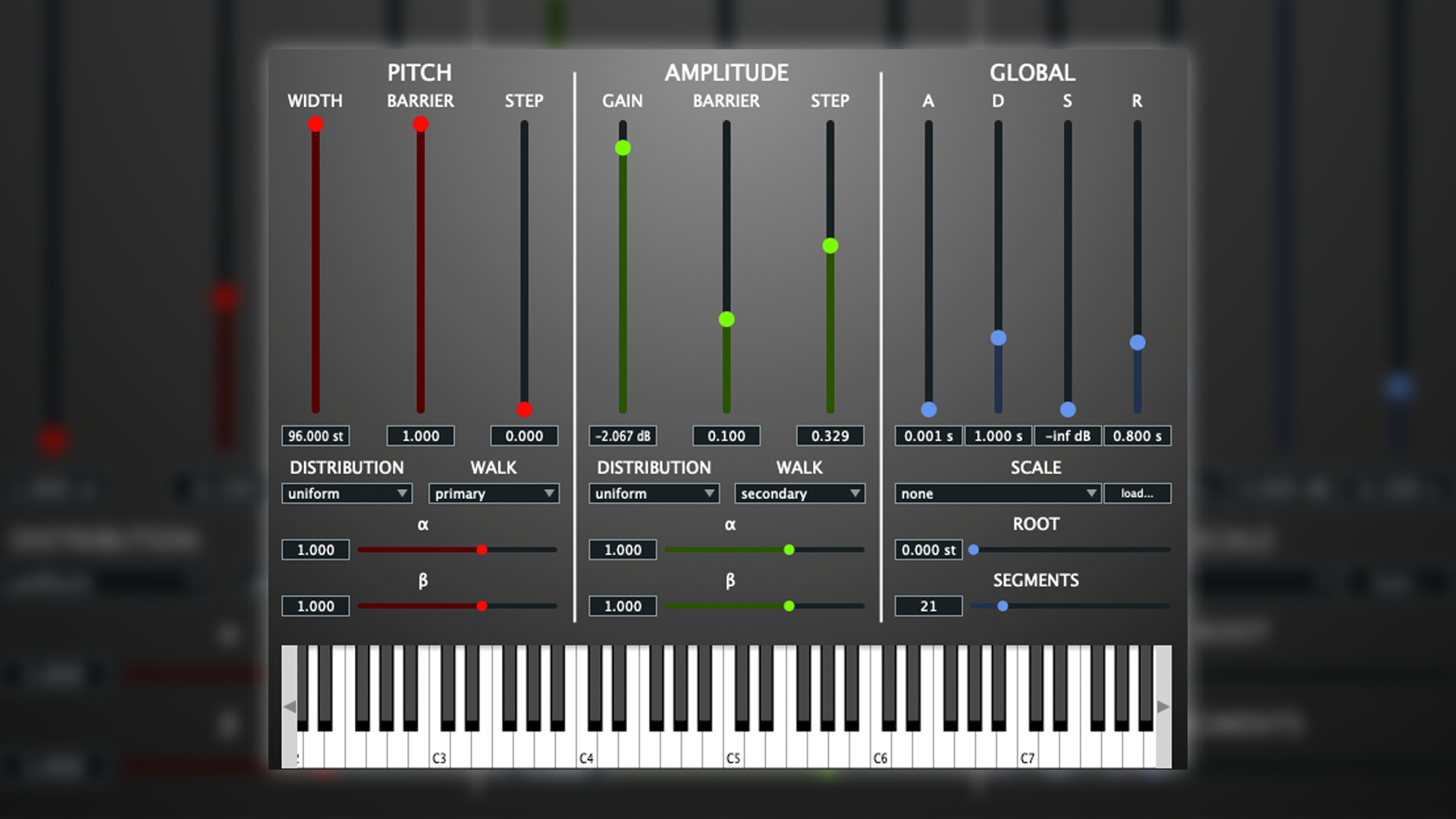
This patch feels quite similar to something you might expect to hear from FM synthesis. It’s glassy, yet also has a warm timbral quality in the lower-mid range. In the upper registers it glistens and in the lower registers it’s quite embracing and expressive.
The timbre is largely achieved through the number of segments and how the amplitude is randomised.
5. The Disillusioned Organ
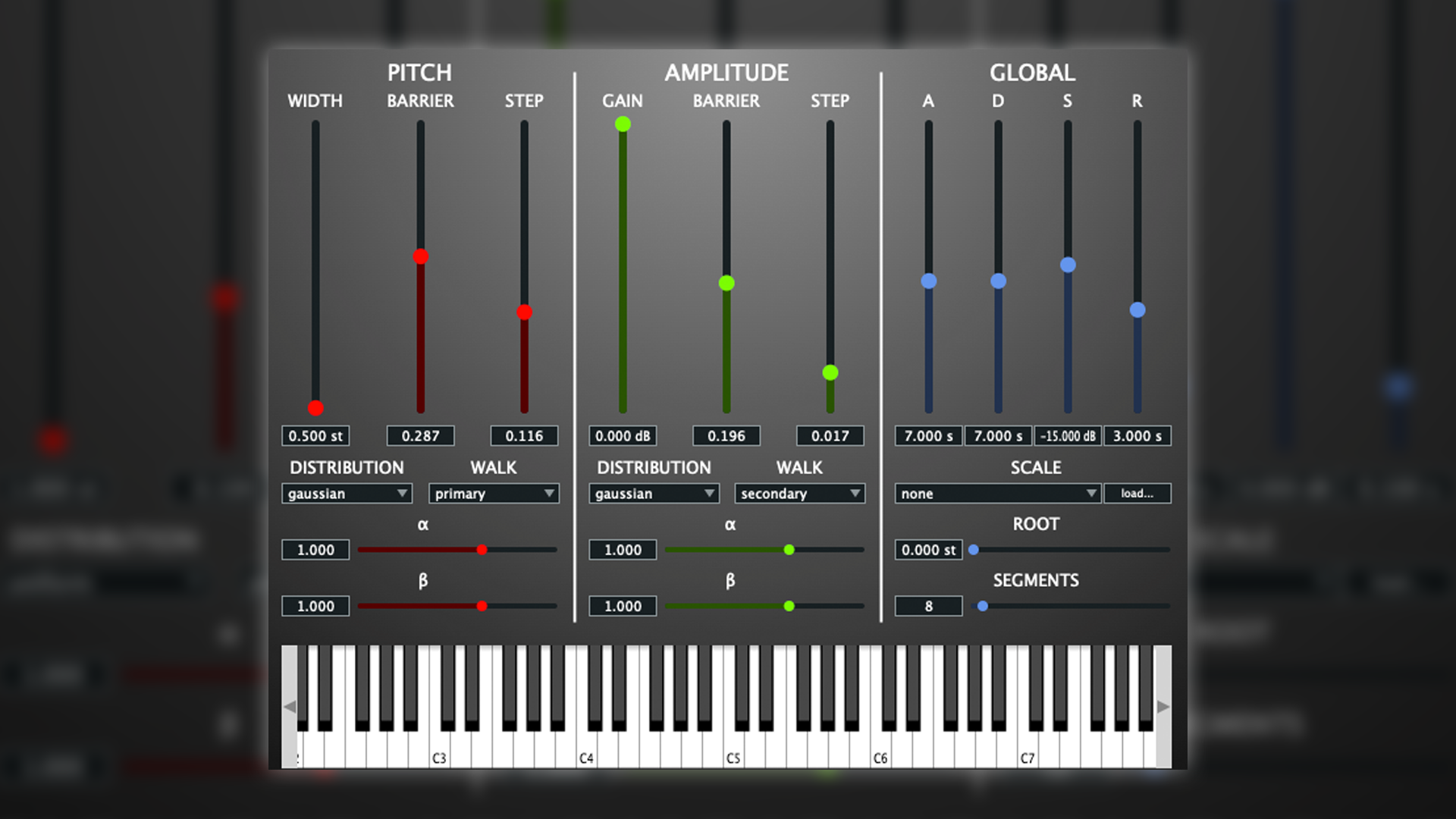
Notice on this patch that the Pitch Width is at a low setting, but the Step is relatively high. Coupling this with the Gaussian randomisation algorithm, appears to generate overtones and harmonics that flutter and flicker in and out existence. I found myself getting lost in the randomised overtones; holding chords for prolonged periods of time and just enjoying what the synth could create.
Whether it’s major, minor, seventh, ninth, augmented, diminished, or anything else, this patch seems able to greatly enhance the emotions of the chords you’re playing with the addition of pitch-relative overtones.
Closing thoughts
As mentioned above, there’s a lot of jargon surrounding this synth, which may feel new, confusing, and possibly deter you from wanting to spend time with it. However, one could have said the same about the Yamaha DX7 and FM synthesis back in 1983, and that went on to become one of the most iconic synthesisers of all time!
That said, despite Xenos actually proving to be simpler than it seems, it’s probably a little too niche and singularly focused to become an icon. Furthermore, it has a few limitations that I believe hold it back from being truly comprehensive; most notably, it's fixed velocity and doesn’t respond to velocity sensitive input.
If it supported velocity sensitivity and parameters could be mapped to the velocity this would allow for more expressive means of play and input. For example, if the Segments control could be tied to velocity, it would enable the player to produce simpler timbres with low velocities, and complex timbres with high velocities (much like a piano, or most other acoustic instruments).
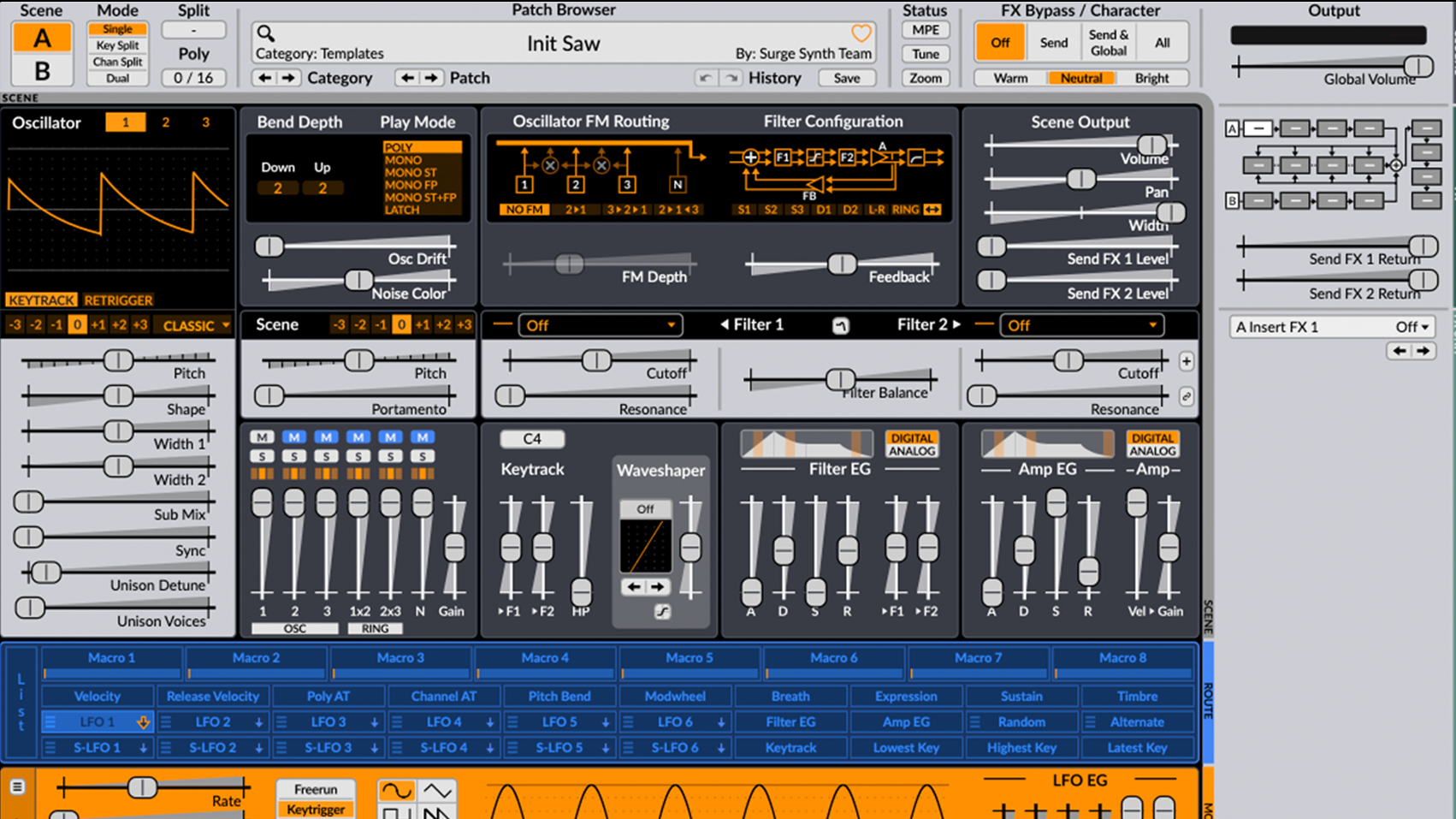
Another thing I noticed whilst experimenting with this synth is that it gets very harsh, very quickly, and the majority of tones I was creating had a very narrow sweet spot, usually between C1 and C3; above this things could get quite shrill. This made me wonder about key-scaling on some parameters (reducing or increasing the severity of parameters depending on which registers you’re playing in), or possibly the addition of a (key-scaled) filter towards the end of the signal chain.
However, these are small shortcomings, and can be worked around in some instances. Furthermore, they don’t really detract from what is a very fascinating idea and technique for sound generation, executed in an approachable and easy to understand manner. We mustn’t forget that this is the work of one person, who was kind enough to give it away for free.
If you’re in the market for something that’s capable of unique, distinctive and characterful tones, I believe you could get a lot of mileage out of this synth (I know that I intend to use it in the future).
Its randomisations have the potential to be extremely inspirational, and whether you’re in need of pads or leads for EDM, or experimenting with random-noise-generation and ambient-drone soundscapes, there’s probably something for you in this quirky oddball of a synth. I strongly recommend you give it a try.


“OSC” Steve is a composer, producer and educator with a background in piano, synthesisers and sound-engineering. He is an established, independent artist in the Synthwave and Retrowave music scenes, and has composed for several independent video-games including Nintendo Switch™ titles.
